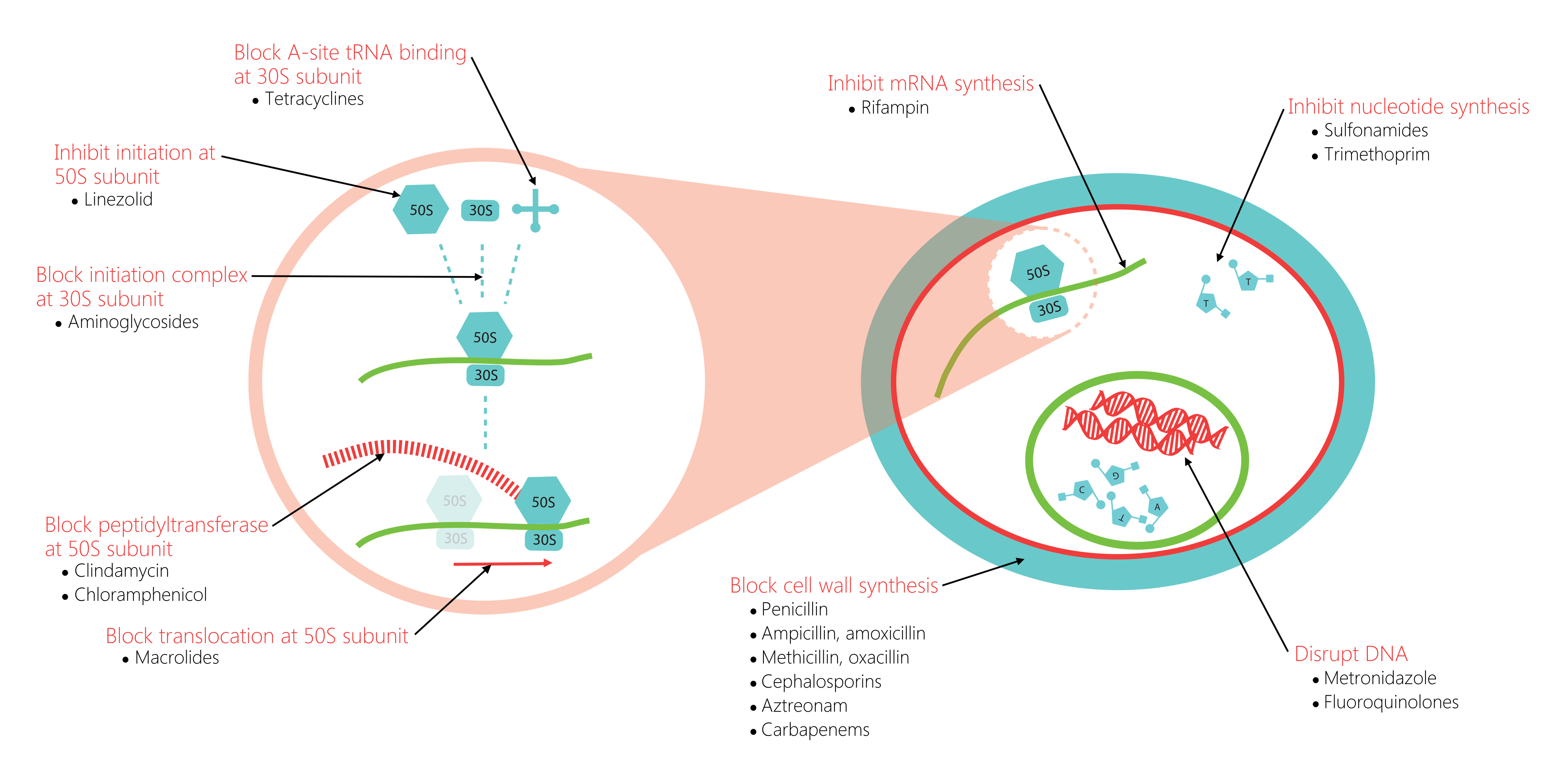WBR0058
Jump to navigation
Jump to search
| Author | PageAuthor::William J Gibson (Reviewed by Yazan Daaboul) |
|---|---|
| Exam Type | ExamType::USMLE Step 1 |
| Main Category | MainCategory::Microbiology, MainCategory::Pharmacology |
| Sub Category | SubCategory::Dermatology, SubCategory::General Principles, SubCategory::Infectious Disease |
| Prompt | [[Prompt::A 27-year-old woman presents to her primary care physician complaining of fever, flu-like symptoms, and a rash. She recently returned from a camping trip in Boston. Physical examination is remarkable for erythema chronicum migrans. What is the optimal treatment for this patient?]] |
| Answer A | AnswerA::Erythromycin |
| Answer A Explanation | AnswerAExp::Erythromycin is a macrolide used to treat atypical pneumonias |
| Answer B | AnswerB::Doxycycline |
| Answer B Explanation | AnswerBExp::Doxyclince is a tetracycline used to treat Lyme disease. |
| Answer C | AnswerC::Penicillin |
| Answer C Explanation | AnswerCExp::Penicillin is a beta-lactam antibiotic used to treat some gram-positive organisms, some gram-negative organisms, and syphilis. |
| Answer D | AnswerD::Trimethoprim-Sulfamethoxazole (TMP-SMX) |
| Answer D Explanation | AnswerDExp::Trimethoprim-Sulfamethoxazole (TMP-SMX) inhibits dihyrofolate reductase and may used to treat UTIs, and ''Pneumocystis jirovecii'' infection in HIV-positive patients. |
| Answer E | AnswerE::Ciprofloxacin |
| Answer E Explanation | AnswerEExp::Ciprofloxacin is a fluoroquinolone which inhibits DNA gyrase and is used to treat gram-negative rods and ''Pseudomonas aeruginosa''. |
| Right Answer | RightAnswer::B |
| Explanation | [[Explanation::The patient in this vignette has the early (primary) stage of Lyme disease, caused by the spirochete Borrelia burgdorferi. Borrelia burgdorferi is a zoonotic bacteria that is carried by the Ixodes (deer) tick. In its early stages, Lyme disease causes flu-like symptoms and a characteristic “bullseye” rash called erythema chronicum migrans present in 80% of patients. The incubation period of Lyme disease can vary greatly, but is typically 1 to 2 weeks.
If untreated, Lyme disease can cause facial palsy and AV nodal block (secondary Lyme disease) progressing to chronic monoarthritis or migratory polyarthritis (tertiary Lyme disease). It is endemic to Northeastern USA. Treatment is generally by doxycyline.
|
| Approved | Approved::Yes |
| Keyword | WBRKeyword::Microbiology, WBRKeyword::Zoonotic, WBRKeyword::Animal, WBRKeyword::Tick, WBRKeyword::Lyme disease, WBRKeyword::Lyme, WBRKeyword::Bacteria, WBRKeyword::Rash, WBRKeyword::Dermatology, WBRKeyword::Pharmacology, WBRKeyword::Drugs, WBRKeyword::Antibiotics, WBRKeyword::Linked |
| Linked Question | Linked:: |
| Order in Linked Questions | LinkedOrder:: |
